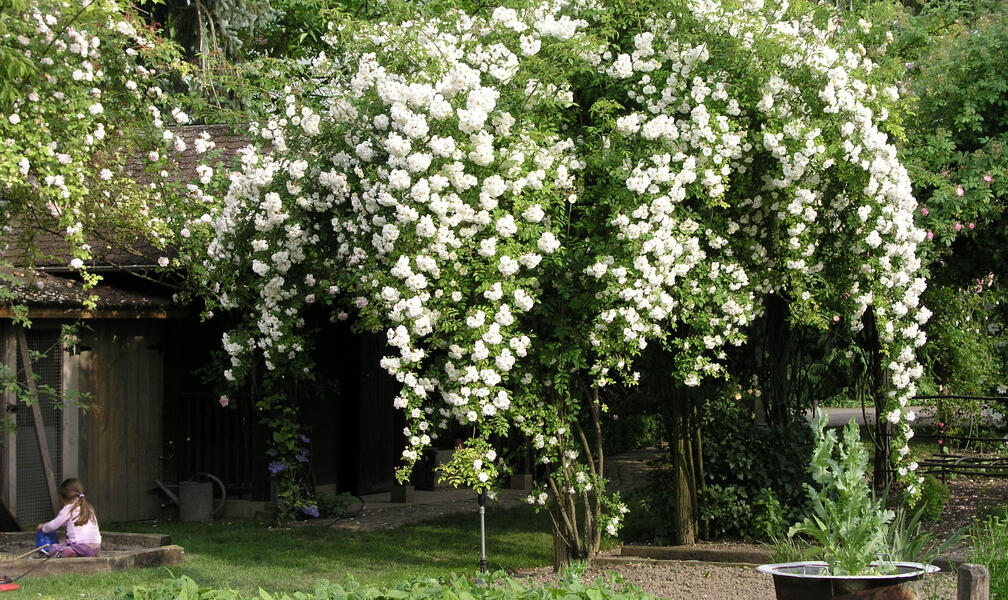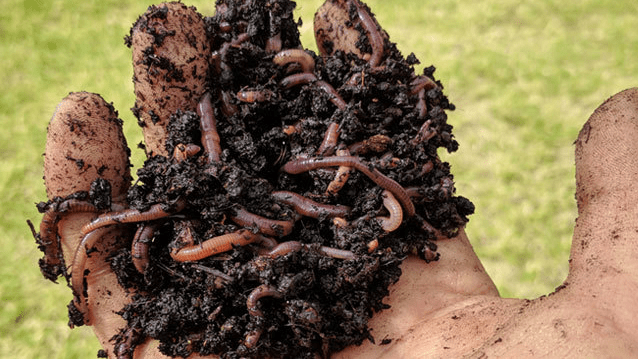Rambler Roses – Romantic Climbers for Natural Gardens
If you want to crown your natural garden with romance, planting a Rambler rose is a must. These magnificent climbing roses can reach heights of up to ten meters and adorn tree canopies, pergolas, and rose arches beautifully. In addition to the stunning visual appeal of Rambler roses, incorporating other plants can enhance the overall charm of your garden. For those looking to add bright splashes of color, consider sowing sunflowers for beginners; they thrive in sunny spots and are easy to care for. Together, these plants can create a vibrant and romantic atmosphere, perfect for enjoying leisurely afternoons outdoors.
Contents
What are Rambler Roses?
Rambler roses — the climbers among rose beauties — were only developed in the early 20th century through crossbreeding Chinese species like Rosa multiflora and Rosa wichuraiana. They are known for their lush growth and numerous, often wild rose-like blooms.
Their long, soft, and flexible shoots make them perfect for climbing pergolas, trellises, or trees, reaching great heights with ease.
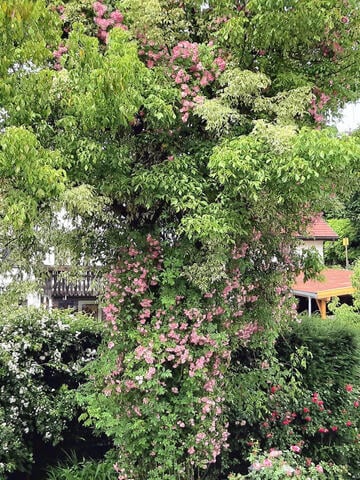
Flowering Time & Varieties
Rambler roses typically bloom once a year in early summer, but when they do, it’s abundantly and impressively for several weeks. Most common bloom colors are pink and white. Some varieties such as ‘Super Excelsa’, ‘Super Dorothy’, and ‘Malvern Hill’ may produce a light second bloom later in the summer, though it’s not as full as the main display or that of modern climbing roses. Rambler roses are part of the broader climbing rose group.
Trees as Climbing Supports
To grow well, Rambler roses need a large and stable climbing support. A particularly striking choice is to let them climb up old fruit trees. After the tree’s spring blossoms fade, the Rambler decorates it with its own stunning color in June and July.
- Ideal conditions: Open canopies and well-ventilated locations help ensure healthy growth.
- Hardy and undemanding: Rambler roses are generally very low-maintenance.
- Besides fruit trees, they can also climb locusts or pine trees — as long as the trunks are strong enough to carry the rose’s eventual weight.
Once planted in a suitable location and given enough space, a Rambler rose can almost take care of itself.
Pruning & Care
Rambler roses are easy to care for and usually don’t need regular pruning. If a thinning cut is necessary, simply remove every third shoot down to the base.
- Heavy pruning is possible if needed, even into older wood.
- For better branching, you can trim back some one-year-old shoots to about half their length in winter.
- Note: Rambler roses bloom mainly on last year’s growth, so heavy pruning will reduce flowering.
How to Plant a Rambler Rose on a Tree
If you’d like to embellish a tree in your garden with a Rambler rose, follow these steps:
Best Planting Time
- Autumn is the best time to plant Rambler roses. It gives the roots time to establish before winter, ensuring vigorous growth and blooming the following year.
Step-by-step Guide:
1. Gather Materials
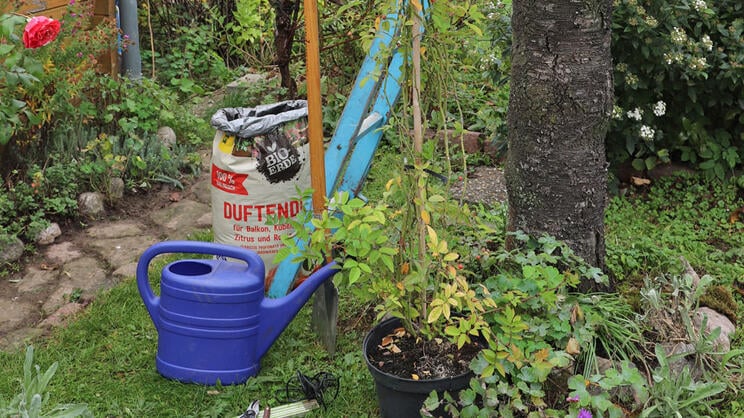
You’ll need:
- Shovel
- Watering can
- Garden shears
- Knife
- Soft garden twine (hollow rope)
- Peat-free organic soil
- An old ladder as an initial support
Place the rose on the north side of the trunk, so it grows toward the light and wraps around the tree.
2. Dig the Planting Hole
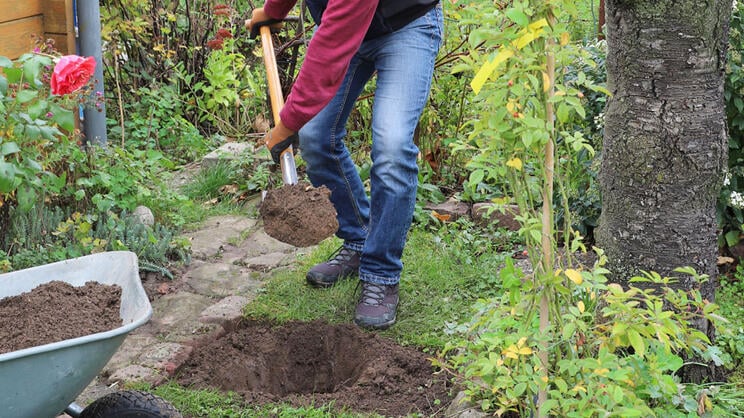
- Dig the hole about 1 meter away from the tree trunk to avoid damaging roots and to allow better establishment.
- Tip: Use a bottomless plastic bucket as a root barrier to protect the rose from competition while it’s establishing.
- The tree trunk should be at least 30 cm thick to support the future weight.
3. Loosen the Soil
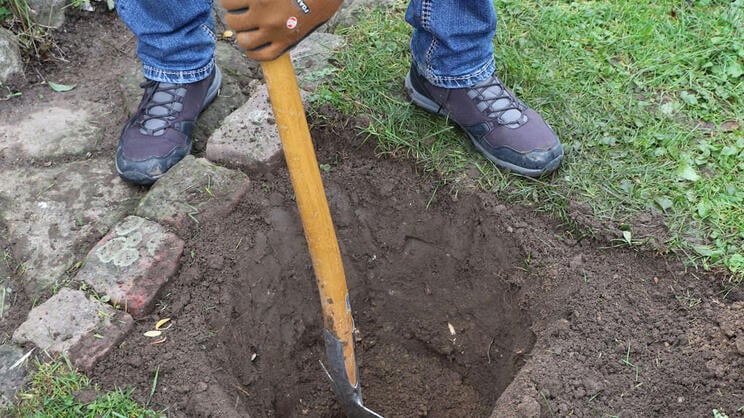
- Avoid damaging tree roots.
- Loosen the bottom of the approx. 40 x 40 cm hole to help the rose’s deep roots grow well.
4. Water the Rose Thoroughly

- Soak the rose in a bucket of water to fully hydrate the root ball before planting.
- This also applies to bare-root roses offered by rose nurseries from mid-October onward.
5. Check the Planting Depth
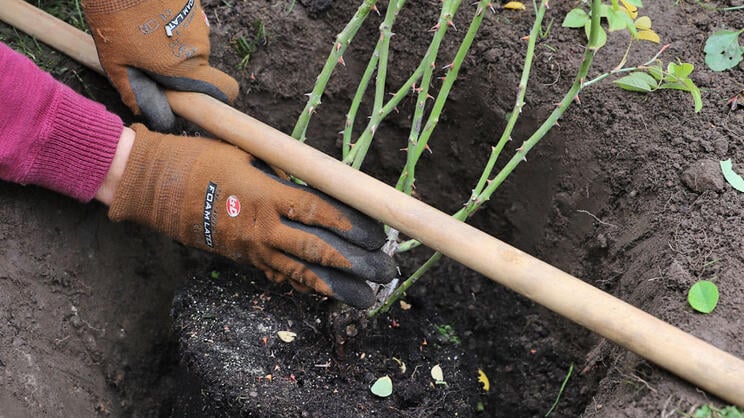
- The graft union should sit about 5 cm (three fingers) below the soil surface to protect it from frost.
- Lay a stick across the hole to help gauge the correct depth.
- If the root ball is densely packed, gently score it before planting.
- Mix the excavated soil with peat-free rose soil before backfilling.
6. Attach a Climbing Aid
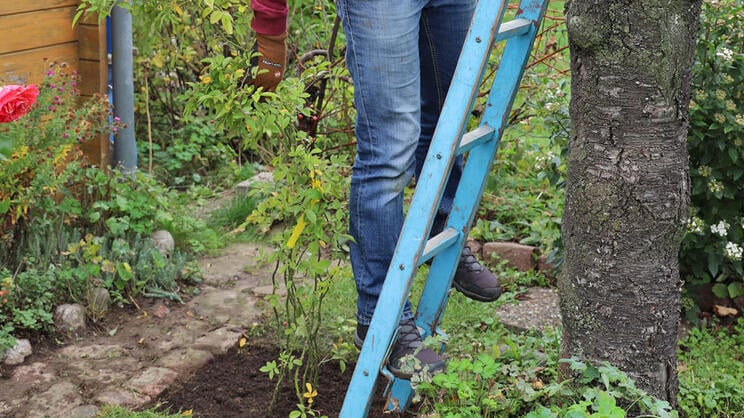
- After pressing down the soil, place the ladder at the edge of the hole and lean it against the tree.
- Firmly press it into the soil and tie the top to the tree for support.
- Remove any ties from the rose canes.
7. Guide the Canes
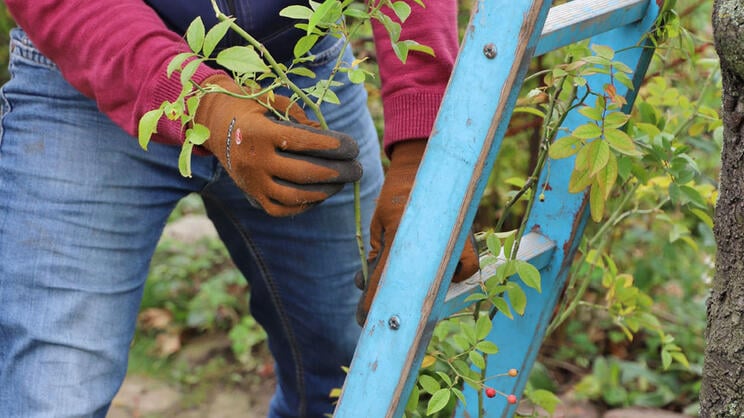
- Trim the flexible shoots and gently weave them through the ladder.
- From there, the rose will naturally find its way into the branches.
- Secure loose canes with hollow twine.
8. Final Touch: Water Well
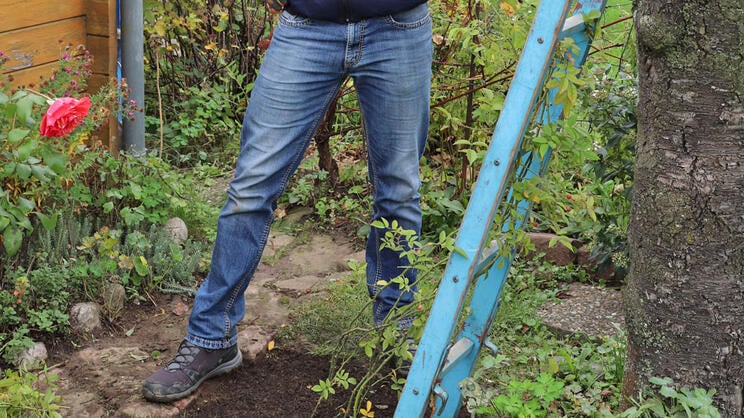
- After planting and guiding the shoots, water thoroughly.
With careful planting and strong support, your Rambler rose will burst into bloom next spring!

